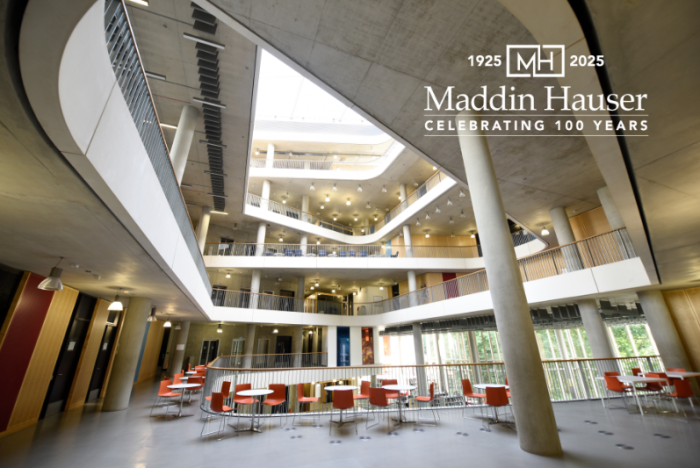
Common Area Maintenance Provisions in Commercial Leases Should Provide Uncommon Detail and Clarity
In a perfect world, commercial leases and all other written agreements would be crafted to remove any ambiguities and address every possible issue. Alas, our world is far from perfect. The same goes for too many commercial lease common area maintenance (CAM) provisions.
These clauses, which have huge financial and practical implications for landlords and tenants alike, often fail to provide essential details regarding how and when expenses are allocated, calculated, adjusted, billed, collected, and reconciled. These omissions lead to costly and disruptive disputes regarding the parties’ respective CAM obligations; conflicts that could have been preempted at the drafting and negotiation stage.
Here are several critical items a commercial lease CAM provision should address in sufficient detail to minimize the likelihood of landlord-tenant disputes.
Clear Definition of Common Areas
The first step in any CAM clause is clearly defining the physical spaces constituting the “common areas” for which tenants will bear some financial responsibility. This includes spaces such as:
- Hallways, stairwells, and lobbies.
- Parking lots and garages.
- Elevators and service corridors.
- Restrooms and public seating areas.
- Landscaping, walkways, and sidewalks.
- Mechanical rooms, utility areas, and security offices (if shared).
The lease should provide landlords with the discretion to modify or expand common areas if there are any significant changes to the property.
Detailed Breakdown of CAM Expenses
Not everything that impacts or involves the interests of all tenants regarding common spaces should be included in CAM expenses, most notably capital expenditures. The lease should delineate what is and isn’t considered a CAM expense.
Typically included in CAM charges are:
- Janitorial and cleaning services.
- Landscaping and snow removal.
- Utilities for common areas (water, electricity, gas).
- Security personnel and systems.
- Trash removal and pest control.
- Insurance related to common areas.
- Maintenance and repair of HVAC, elevators, and fire systems.
- Parking lot upkeep (repaving, lighting, striping).
- Management fees.
On that last item, management fees, the landlord should fully disclose any relationship with the management company receiving the payments and may want to consider a self-imposed cap (e.g., 3–5% of gross rents or CAM recoveries) to preempt any claims the fees are excessive or unreasonable.
To prevent tenant pushback or claims of overcharging, landlords should explicitly exclude certain items from CAM costs, such as:
- Capital expenditures (unless amortized and related to compliance or energy efficiency).
- Marketing and promotional expenses.
- Costs for correcting code violations or damages caused by another tenant.
- Legal fees, unless tied to common area operations or a property tax appeal.
Beyond Basic Allocation Methodology
The basic allocation formula for CAM among tenants is one item that is always spelled out in even the most threadbare commercial lease. But beyond stating whether it is calculated pro rata based on square footage of leasable space or a straight percentage, several issues impact how much a tenant will be charged.
CAM Caps and Increases
Many tenants negotiate limits on how much CAM charges can increase annually. These may be:
- Fixed caps (e.g., no more than 5% annual increase).
- CPI-based caps (tied to inflation indexes).
- Controllable cost caps, which exclude costs such as taxes and insurance.
Landlords should anticipate such requests and structure caps to preserve financial stability. Including “cumulative” vs. “non-cumulative” cap language is also essential. Cumulative caps allow unused increases to carry forward, while non-cumulative caps do not.
Gross-Up Provisions
In partially occupied properties, landlords may include gross-up clauses, allowing them to calculate certain variable CAM expenses as if the building were fully leased. This avoids under-recovery of costs when vacancy is high.
The lease should specify:
- Which expenses are subject to gross-up.
- The assumed occupancy level for calculation.
- That tenants won’t be charged more than their fair share.
Timing and Procedures for Invoicing and Payment of CAM Charges
The lease should clarify when and how CAM charges will be calculated, billed, and paid. Typically, this will be on a monthly basis and usually consists of a generic and non-itemized charge for all expenses included in the lease’s definition of CAM.
Reconciliation, Audit Rights, Recordkeeping, and Transparency
Since most commercial landlords bill tenants for estimated rather than actual CAM charges, the reconciliation process is a critical, typically annual, exercise for landlords and tenants alike.
The lease should outline:
- How estimates are calculated (based on prior year or budget).
- Timing of and deadline for reconciliation.
- The timing of tenant obligations to pay any underpayments, and how and when the landlord will provide any credits for overpayments.
Landlords should also reserve the right to adjust estimates mid-year if unexpected expenses arise (e.g., emergency repairs or significant utility hikes).
Understandably, tenants often want the right to audit CAM charges. When they do, the landlord will be well-served if they have kept detailed and meticulous records to support their allocation of expenses. Landlords should also provide annual CAM reconciliation statements which list expenses in line-item detail. Audit rights should not be unlimited, however, to avoid unreasonable and burdensome requests. Provisions relating to audits should include:
- A reasonable notice period (e.g., 30–60 days).
- Audit frequency limits (e.g., once per year).
- Restrictions on third-party auditors.
- Confidentiality provisions.
- Dispute resolution processes.
One issue frequently left unaddressed is what happens with reconciliations and over/underpayments if the lease terminates early. This contingency should be specifically accounted for in terms of timing and audit rights post-termination.
By investing time upfront to develop thoughtful, fair, and detailed CAM language, commercial landlords can minimize conflict and risk, ensure fair and consistent cost allocation and recovery, and enhance the value of their property. If you have questions or need assistance reviewing, drafting, or negotiating a commercial lease, please contact Andrew Harris at Maddin Hauser.
































